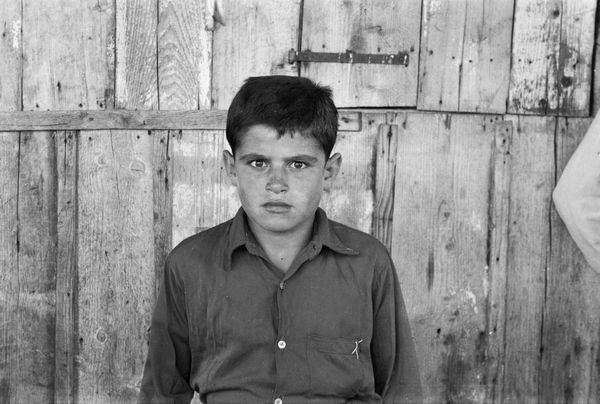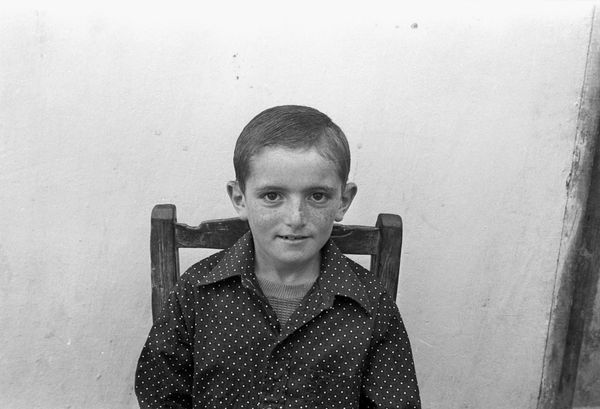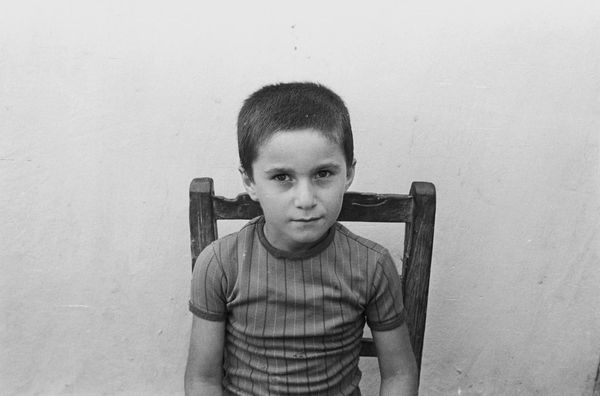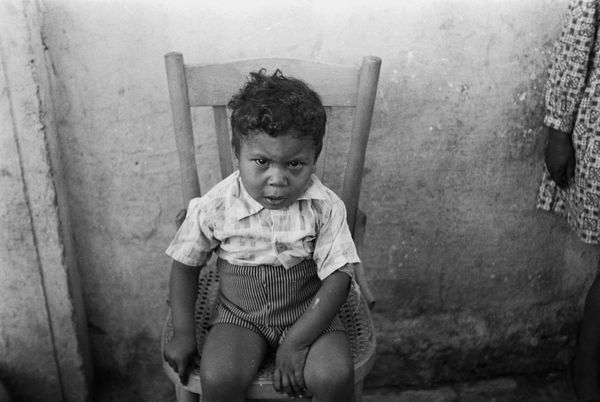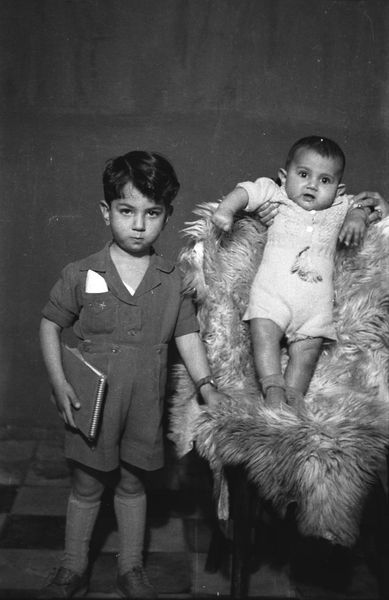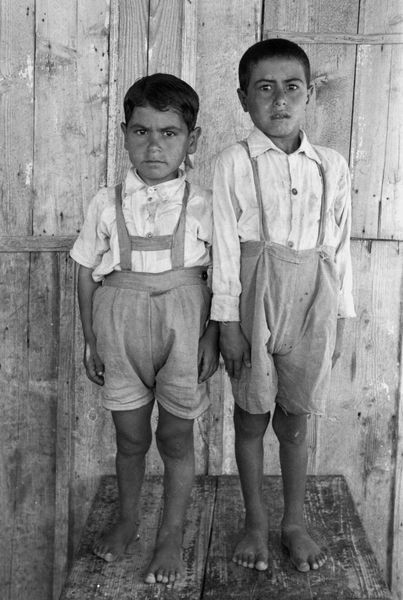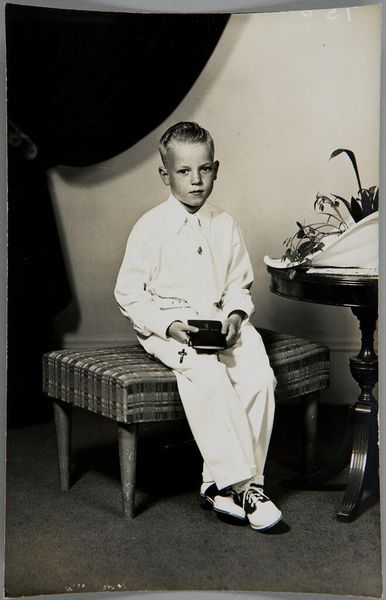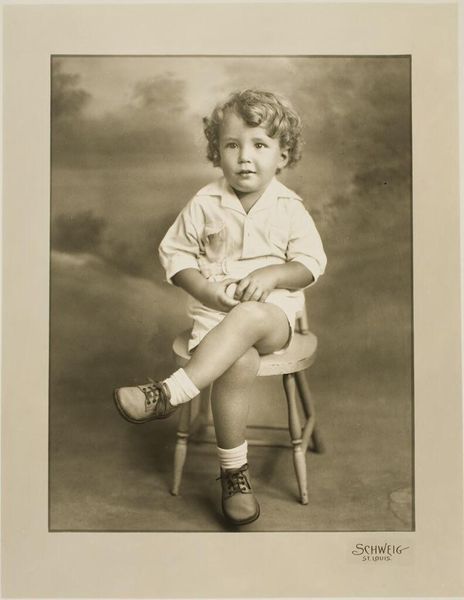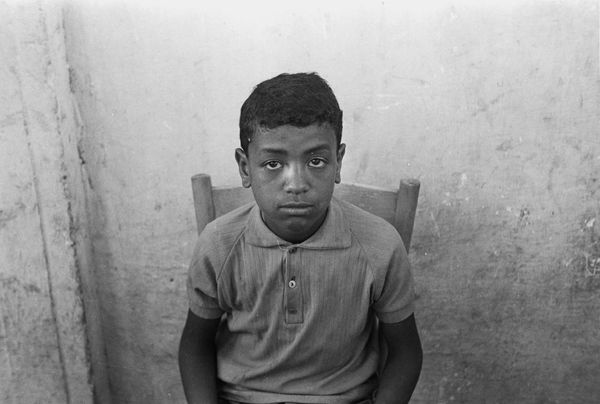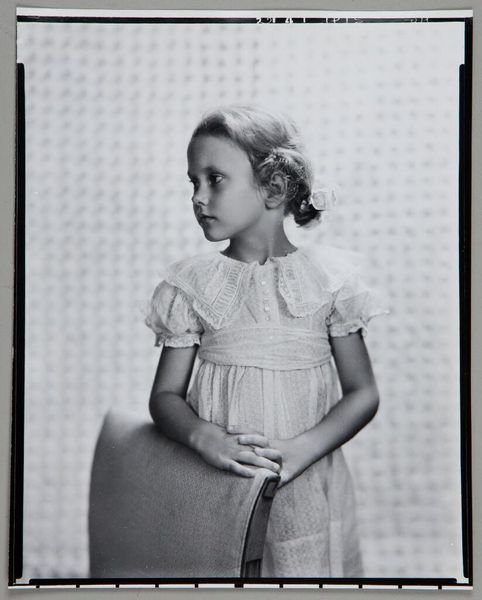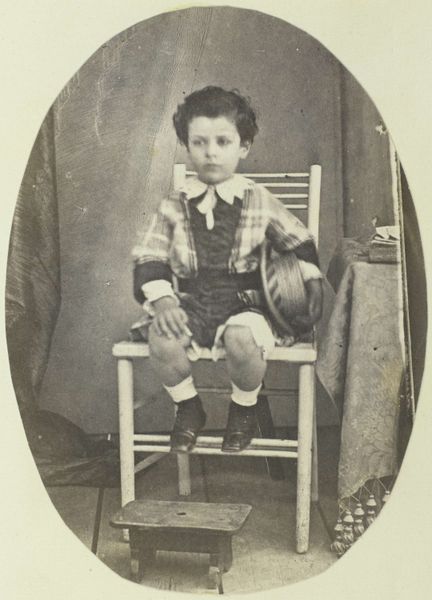
Anonymous. Madani’s parents’ home, the studio, Saida, Lebanon, 1948-53. Hashem el Madani 2007
0:00
0:00
Dimensions: image: 395 x 265 mm
Copyright: © Akram Zaatari, courtesy Hashem el Madani and Arab Image Foundation, Beirut | CC-BY-NC-ND 4.0 DEED, Photo: Tate
Curator: This photograph, part of Akram Zaatari's body of work, captures a young boy in Saida, Lebanon, sometime between 1948 and 1953. The original photographer remains anonymous, but it's known to have been taken in Hashem el Madani’s studio. Editor: Oh, this one's instantly charming! It's that cross-eyed stare, isn't it? He seems a bit bewildered, like he's been plucked from playtime and told to pose. Curator: Indeed. Consider the formal elements: the stark contrast, the careful arrangement of figure, flowers, and cylindrical pedestal. The composition emphasizes a certain stoicism and stillness, common in studio portraiture of that era. Editor: Yet, there's also a playful innocence fighting against it. The checkered floor adds to the almost theatrical quality, as if he’s an actor on a tiny stage. Curator: And through Zaatari’s curation, the photograph becomes more than just a portrait. It's a meditation on memory, documentation, and the very act of seeing. Editor: It makes you wonder about the life of this little boy. Makes you want to peek through the lens and ask him if he made it to the sea that day. Curator: A poignant reminder of time's passage. Editor: Absolutely.
Comments
tate 7 months ago
⋮
http://www.tate.org.uk/art/artworks/zaatari-anonymous-madanis-parents-home-the-studio-saida-lebanon-1948-53-hashem-el-madani-p79503
Join the conversation
Join millions of artists and users on Artera today and experience the ultimate creative platform.
tate 7 months ago
⋮
This work is one of a series of black and white silver gelatin photographs of varying sizes that are collectively titled Objects of study/The archive of studio Shehrazade/Hashem el Madani/Studio Practices. All of the photographs were taken by the Lebanese commercial photographer Hashem el Madani between 1948 and 1982 and compiled into the present group, 117 of which are in Tate’s collection, by the Lebanese artist Akram Zaatari. All of the photographs include people, either alone, in pairs or in small groups, and most were taken in Madani’s studio, although some were shot outside and in his subjects’ homes. The series features men and women and covers a wide age range from babies to elderly people. Almost all of the sitters assume poses deliberately for the camera, sometimes accompanied by props or costumes, and most gaze directly towards the lens. Many of the pictures show subjects interacting in various ways, including embracing, kissing and acting out scenes, such as a mock wrestling match. The photographs are mostly tightly cropped, with the sitter or sitters filling most of the frame, although in some cases the figures are positioned further away from the camera, for instance when shown sitting at a table or standing behind a chair. The photographs tend to have sparse backgrounds, often dominated by a blank posterior wall. They are mounted on white paper, displayed in plain white frames and signed on the back by Madani. Many of them have been organised into categories by Zaatari – such as a group featuring men dressed as Syrian resistance fighters and a collection depicting newly married couples – while the rest are presented individually. Zaatari has stated that although he prefers these groups to be displayed together, this is not a requirement (Akram Zaatari, email to Rachel Taylor, 24 April 2008, Tate Acquisition file).

